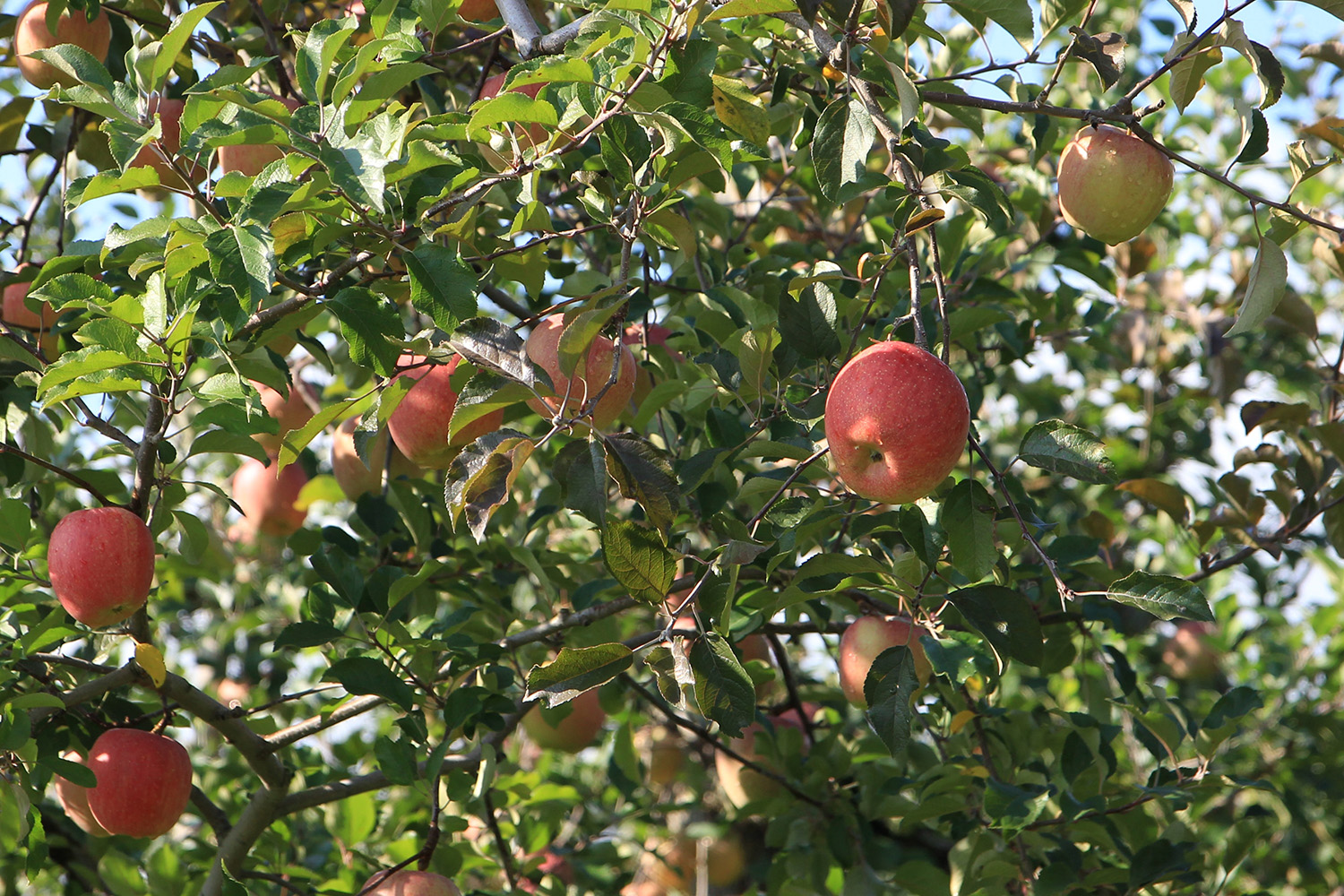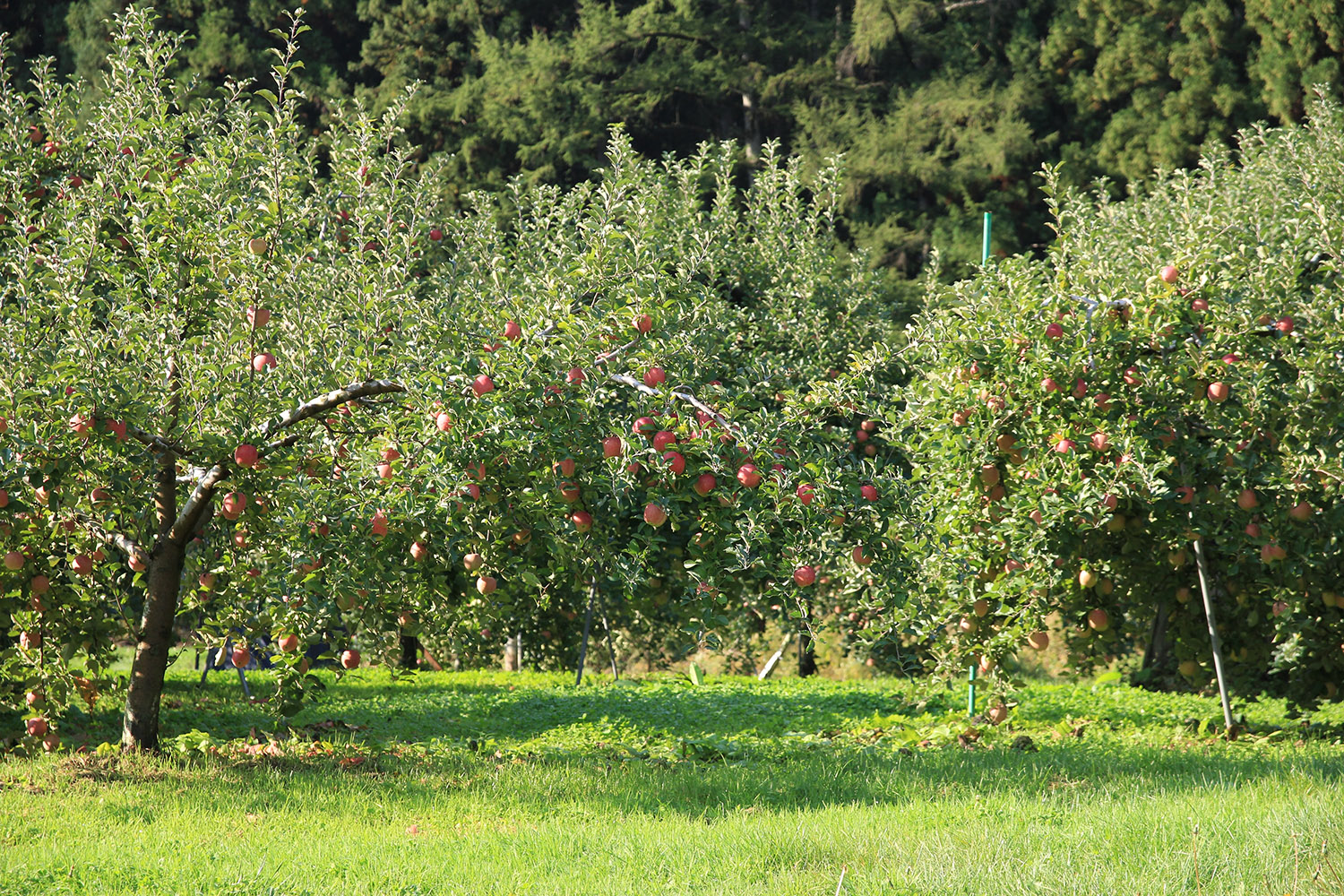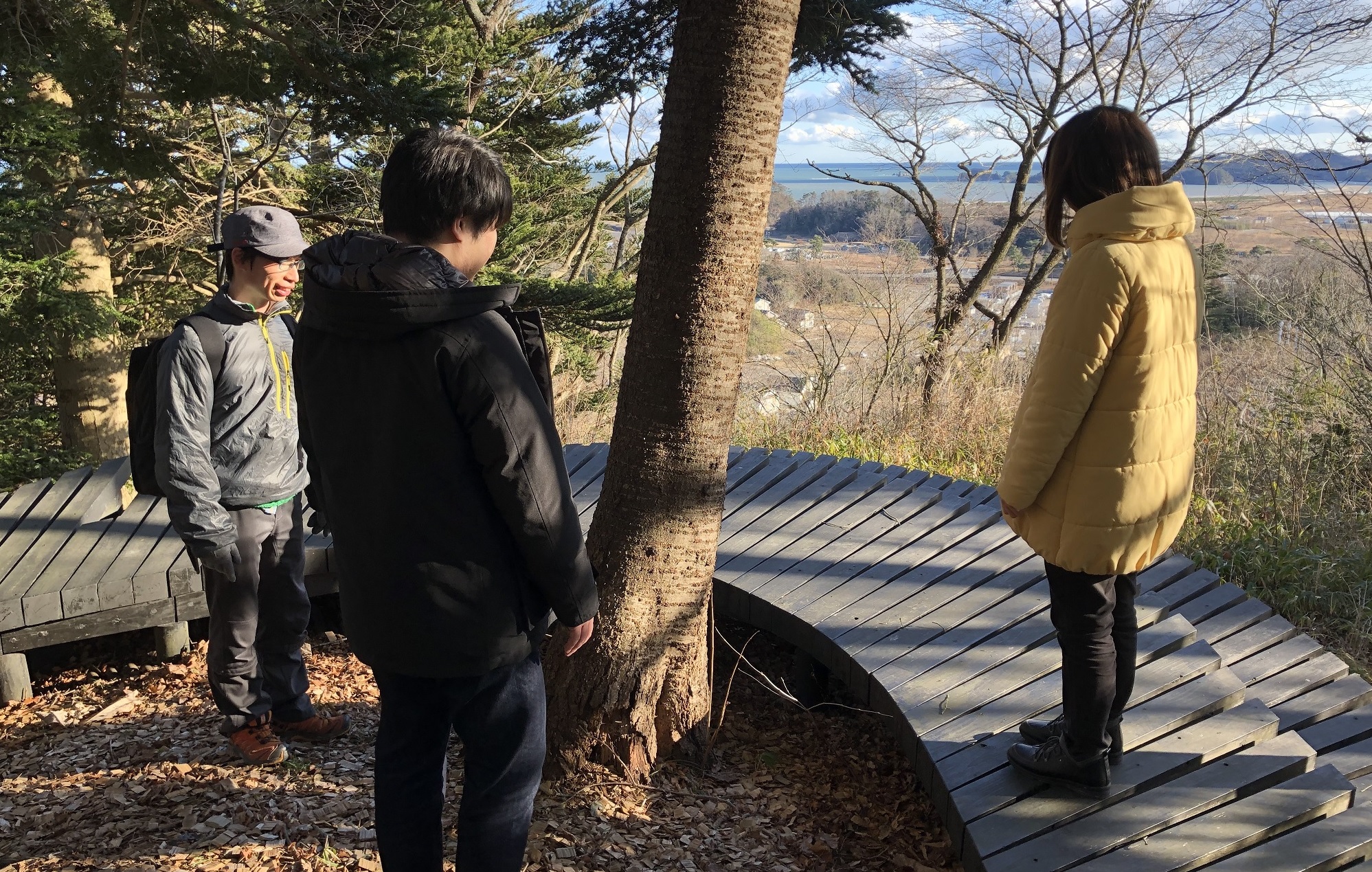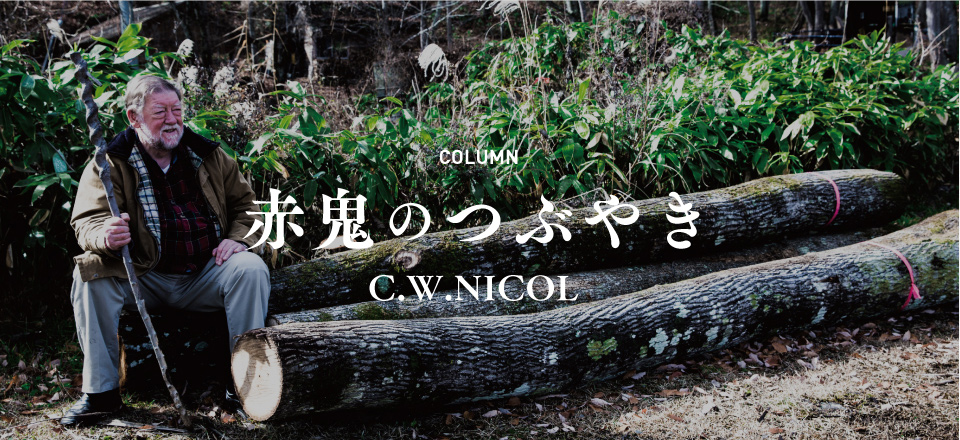Column
【赤鬼のつぶやき C.W.ニコル】りんご(apple)
リンゴは恐らく、最も古くから栽培されてきた果樹でしょう。原産地の中央アジアから世界各地に広がりました。中国のように、何千年も前からリンゴが栽培されてきた地域もあります。 私の生まれ故郷である英国にリンゴがもたらされたのは約2千年前、ローマ帝国がブリテン諸島を200年以上にわたり占領していた時代でした。 キリスト教を初め、北欧、ゲルマン、ギリシアなど、実に多くの文化において、リンゴは神話や宗教の中で重要な意味を与えられています。 ヨーロッパの初期の入植者たちは北米にリンゴを持ち込み、果樹園とともに新たな伝説を生み出していったのです。 また、リンゴは扱いやすい果実で、樽に入れて涼しく乾燥した場所におけば長旅にも耐えますし、干したり瓶詰めにしたりすれば長期保存も可能です。 リンゴを発酵させて作る果実酒を、英国では「サイダー」と呼びます(シードルではありません!)。 このアップルサイダーは、私が(12歳くらいの頃)生まれて初めて口にしたアルコール飲料でした。 サイダーを蒸留すれば、味わい深く、強烈なお酒、カルヴァドスが出来上がります。

英語圏では、リンゴを含むことわざや歌、物語の多さに驚くばかり。 その中には(『白雪姫と七人のこびと』のように)ウォルト・ディズニーによって有名になったものもあります。
私はウェールズ生まれですが、イングランド南西部のグロスターシャー州の学校へ通っていました。 当時、田舎の家には必ずといっていいほどリンゴの木がありました。 けれども、少年時代を振り返って最も心に残る風景はと言えば、高い石の壁に囲まれた果樹園と、そこに立ち並んでいた大きなリンゴの古木です。 恐らく高い壁はイタズラ坊主や害獣を寄せつけないためのものだったでしょうが、もう一つ、3月に吹き荒れる冷たい風からリンゴを守る役目も果たしていたことでしょう。 また、南に面した石壁は降り注ぐ陽ざしの熱を蓄え、果樹園のリンゴは吹きさらしの中に立つ他の木々よりも早く花を咲かせ、実をつけたものです。 野生のリンゴは樹高8―10メートルにも達しますが、石の壁に守られた果樹園のリンゴはそれにも負けないくらい大きく、実を収穫するにはハシゴが必要でした。

リンゴの栽培種は多く、7,500種以上もあります。 英国では、落ちたリンゴも集めてサイダーの原料にします――多少キズがあったところで、どのみちつぶすことになるのですから問題ありません。 収穫期の終わりには、果樹園にブタを放します。 ブタは好きなように駆け回り、落ちて傷ついたリンゴを思う存分詰め込みます。 伝統的な英国の豚肉料理にアップルソースが欠かせないのも肯けるというものです!
2010年、リンゴのゲノム解析が行われ、コード配列から約5万7千の遺伝子が推定されました。 ヒトの遺伝子(ゲノムDNAの中で直接働いている部分)が約3万程度であることを思えば、これは驚くべき数字でしょう!

日本でリンゴの大規模栽培が始まったのは明治時代のことです。 私は1963年に初めて日本のリンゴ園を目にしたのですが、印象に残ったのは木々ではなく満開の花、そして当然のことながら果実でした。 日本の果樹園のリンゴは盆栽と同様、人間の都合に合わせて形作られたものです。 確かに、そのほうが栽培、授粉(ハチによる授粉がかなわない場合、すべては手作業となります)、収穫、すべてにおいてはるかに効率がよいでしょう。 それでも、私は子どもの頃に見た自然のままの、大きなリンゴの古木がなつかしくてなりません。
1980年、黒姫に移り住んだ当時、わが家の冬の燃料と言えばリンゴの木でした。 隣接する牟礼の果樹園で間伐された古木を薪にして使ったのです。 火持ちもよく、香りもよい素晴らしい薪ですが、恐ろしく堅くて割るのは一苦労でした!
リンゴの木は食材の燻製用チップにも利用されます。 また、木目の細かいものは高級家具にも使われると読んだことがあります。 ただし、私自身はリンゴ材を使った家具を目にしたことはありません。 立派なリンゴの古木を、木材にするためだけに切り倒すことなど、私には想像しがたいことです。 私にとって、リンゴはただの食物でもなければ、売り買いされるモノでもない、ヨーロッパ文化と不可分の存在なのです。
2020年1月
C.W.ニコル
写真提供:C.W.ニコル・アファンの森財団
APPLE
The apple trees, probably the oldest of all cultivated fruit trees, originated in Central Asia, from where it spread. In places like China apples have been grown for thousands of years. Apples were brought over to my native Britain about two thousand years ago, when the Roman Empire occupied the British Isles for over two hundred years. Apples have mythological and religious significance in a great many cultures, including Christian, Norse, Germanic and Greek. Early European settlers took the apple to North America, creating new legends as well as orchards. As a fruit, if kept cool and dry, apples travel well in barrels, and are easily preserved by drying and bottling. Apart from food, fermented apple juice, which in Britain we call ‘cider’ (not ‘cidre’!) was the first alcoholic drink I ever tried (at around twelve years old.) Distilled cider makes as wonderful, powerful drink called Calvados.
In the English language, the numbers of sayings, songs and stories involving apples is quite astonishing, including some made famous by Walt Disney. (Snow White and the seven dwarves etc.)
I was born In Wales, but went to school in Gloucestershire, western England. In those days pretty well every country cottage had an apple tree, but the apples most memorable to me as a boy where the great old trees grown in orchards surrounded by high stone walls. These walls were supposed to keep out pests, such as small boys, but they also shielded the trees from the blustering, chilly winds of March, and with the sun warming south-facing walls, these trees could blossom and produce fruit quicker than those left out in the great outdoors. Wild apple trees can reach heights of 8 – 10 metres, and the trees in these old stonewalled orchards were also big. Ladders were needed to harvest them.
There are many kinds of apples (more than 7,500) cultivars. In Britain fallen apples could also be gathered to make cider, as they would be crushed anyway. At the end of the harvest season, pigs were often left to run free in the orchards so they could gorge on fallen, bruised apples. In traditional British pork cookery, applesauce is a must!
In 2010, the apple genome was sequenced, and proved to have about 57,000 genes! This is astonishing, as the human genome ‘only’ has about 30,000 genes.
In Japan, large-scale cultivation of apples did not really start until the Meiji period. When I first saw Japanese apple orchards in 1963, I recognized them not as trees, but first by the blossoms, and then of course by the fruit. Japanese apple trees are like bonsai, their shapes totally altered for the convenience of man. This makes for a far great efficiency in nurturing, pollinating (when bees are not available, this must be done by hand) harvesting and so on, but I really miss the big old apple trees of my childhood.
When I first came to live in Kurohime in 1980, our winter fuel was apple wood, from old trees culled from the orchards of neighboring Mure. It is fantastic firewood, but a devil to split!
Apple wood is also used for smoking food, and I have read that the fine-grained wood can be used in cabinet making, although I have never seen such a product. I can’t imagine anybody cutting down a big old apple tree just for the timber. To me, apples are an inseparable part of our European culture, not just of diet and economy.
C.W. Nicol
1.2020
C.W.ニコル
作家・1940年イギリス南ウェールズ生まれ。1995年日本国籍取得。カナダ水産調査局北極生物研究所の技官・環境局の環境問題緊急対策官やエチオピアのシミエン山岳国立公園の公園長など世界各地で環境保護活動を行い、1980年から長野県在住。1984年から荒れ果てた里山を購入し「アファンの森」と名づけ、森の再生活動を始める。2005年、その活動が認められエリザベス女王から名誉大英勲章を賜る。2011年、2016年に天皇、皇后両陛下がアファンの森をご視察された。





